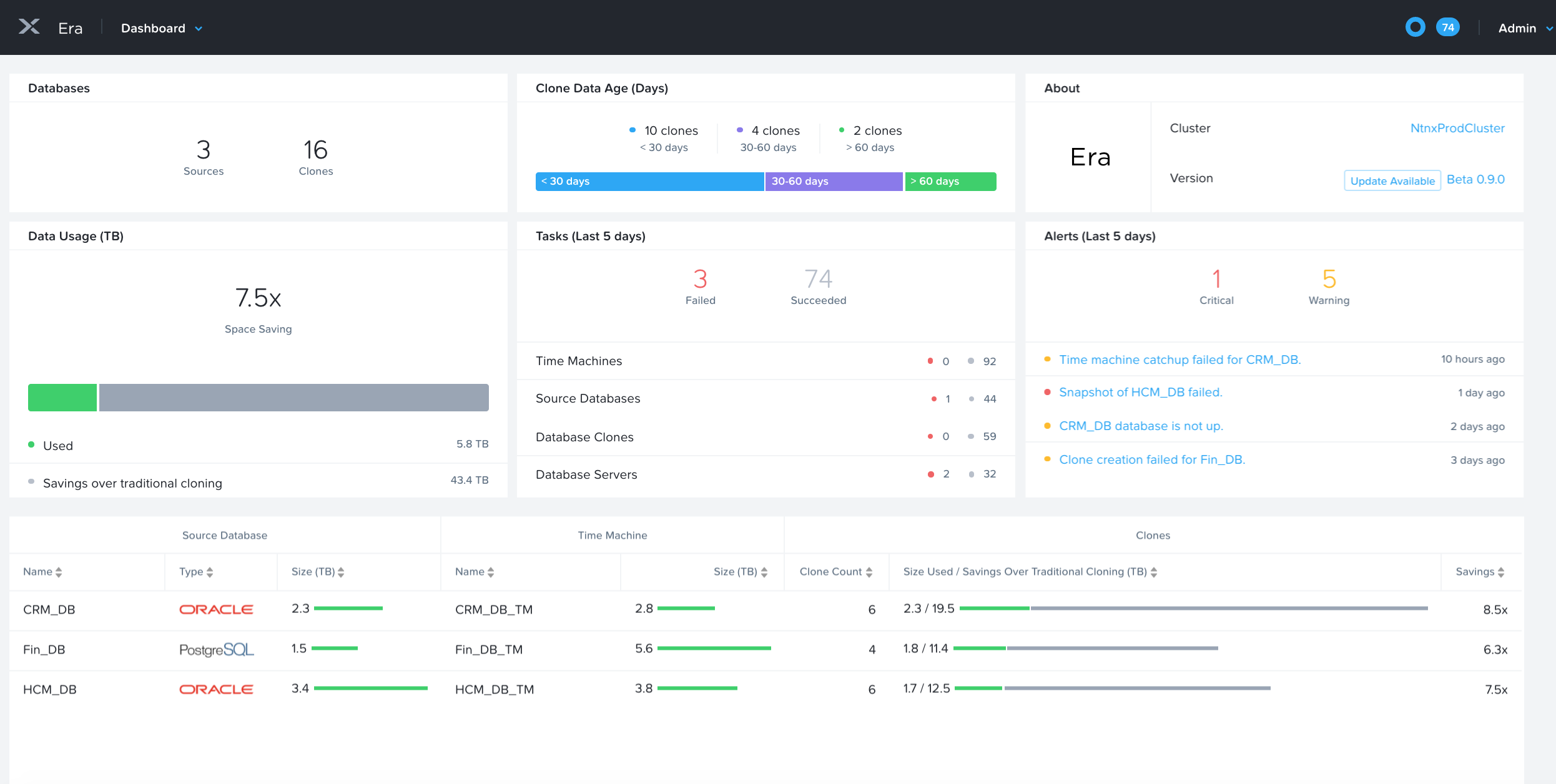
While there is a battle of sorts going on between hyperconverged architectures and disaggregated ones, it is probably safe to assume that at the scale that most enterprises run, they could care less about which one they choose so long as either architecture does what they need to support applications. Enterprises will find some use for both hyperconverged platforms that merge virtual compute and virtual storage for many years to come, but we would also bet that over the long haul, compute and storage will be disaggregated and connected by fast and vast networks because, frankly, that is how Google has been doing it for more than a decade and a half.
In this sense, the whole wave of virtual computing that started in earnest a decade ago on the X86 servers that dominate the datacenter – during the belly of the Great Recession when servers were woefully inefficiently used – becomes the new legacy. Those workloads will persist, perhaps for decades and making VMware, Microsoft, and Red Hat lots and lots of money. With one caveat. These HCI platforms will persist so long as they continue to evolve into fuller and richer platforms. The reason is simple. What enterprises build or buy are platforms, and what they want in most cases is something that is easy to deploy and maintain but also something that continues to solve more and more problems and adapts as compute, storage, and network technology evolves. This was true of the IBM System/360 mainframe five decades ago, of proprietary minicomputers like the DEC VAX, IBM AS/400, and HP 3000 three decades ago, and the Windows Server and Linux platforms running largely on X86 iron two decades ago. Some decades hence, we will be facing yet another technology shift beyond containers and serverless architectures, and we will look back and say the same thing about them.
So success will come to those in the HCI space who build out a platform. Red Hat and VMware have spent more than a decade building their respective platforms, and Nutanix, the pioneer of the server-SAN half-blood, needs to do the same if it wants to stay in the race. The Red Hat and VMware platforms are rich and complex, and they are overkill for many applications and certainly for many midrange and large enterprises that want a virtualized platform but they don’t want to hire a bunch of PhDs to set it up and keep it maintained. Ease of use has always been a key differentiator in IT, and it is what can make or break a platform sale.
To flesh out its Acropolis HCI stack – which has had many names in the past decade, including SOCS, Xtreme Computing Platform, Enterprise Computing Platform – Nutanix has made two acquisitions and is weaving them into the stack as well as adding some platform cloud functionality that it cooked up itself. The announcements are coming out this week at the company’s .NEXT user and partner conference, which is being held in New Orleans and which is being attended by around 5,500 people. That’s a pretty good crowd for an HCI platform, and up by more than 5X from the under 1,000 attendees at the inaugural .NEXT conference three years ago.
Let’s talk about the updates to the Acropolis stack from the inside and working out. At the infrastructure level, Nutanix is adding a new service to Acropolis that brings it virtual networking. This bit of code was developed in-house, and is being mashed up with code that came to Nutanix through its acquisition of Netsil, a startup founded by Harjot Gill three years ago that raised $5.75 million in venture funding to create what it called the Application Operations Center to deploy microservices applications atop Docker container environments orchestrated by Kubernetes. Nutanix has created a set of virtual networking functions and added to it a means of doing microsegmentation, brought in from Netsil, to provide absolute application isolation for virtual machine images running on Acropolis. Nutanix bought Netsil for an undisclosed amount back in March.
The virtual networking features are a lot less complex and a lot less costly than something like VMware’s NSX, which is a very sophisticated network overlay intended to support all kinds of virtualized and containerized platforms, Greg Smith, vice president of product marketing, tells The Next Platform. The networking elements of the Netsil tool have been integrated into Acropolis and are now being sold as an add-on called Flow, which does three things. First, it can reach into an Acropolis cluster and the network that links them to analyze and visualize what is going on in the network and assess the health of that network. Second, it can configure network devices added to that network with a couple of mouse clicks, and importantly, based on policies that are governed by application performance levels set by administrators. This means the applications are driving the network configuration and not the other way around. Third, microsegmentation of workloads is provided by Flow by essentially creating a firewall instance for each and every VM instance and using this collection of firewalls to manage the east-west traffic between server nodes that typifies a modern distributed application these days.
This microsegmentation approach is, says Smith, far simpler than the software-defined networking overlays like NSX. Not that Acropolis is incompatible with NSX. Many shops using the HCI stack from Nutanix do run it atop the VMware ESXi hypervisor and they do use NSX as their corporate network overlay, and it works fine. Flow is less sophisticated, and does its job by listening to all of the API calls in a stack instead of having an agent sitting on every node, and has the virtue of being easier to use, too. The secret sauce that Netsil created and that was attractive to Nutanix is a set of application layer traffic analysis algorithms that map the flow of data around applications created using a very distributed, microservices approach. The basic service insertion and chaining and network automation functions of Flow are embedded in the Acropolis stack for free, but those who want the application flow visualization and microsegmentation functions will have to pay an incremental license for these Flow features. Smith says that, depending on the configuration, this will be anywhere from a 10 percent to 25 percent uplift over the base Acropolis stack license fees.
Moving up the Acropolis stack to the platform level, Nutanix is adding a database provisioning and platform service to Acropolis, which is called Era. This functionality was built in-house, and is being tested throughout the summer with general availability later in the year. The idea is to simplify and standardize the way that relational databases (and potentially other datastores such as MongoDB or Cassandra someday) are deployed atop Acropolis and spread across the cluster as need be. With compute, storage, and networking now virtualized, Era can mask the complexity of setting up a database and automatically creates the images, capacity, and links to set up a database. To start, Oracle and Postgres databases can be launched from this platform layer (provided companies bring their own licenses), and in the future the various MySQL databases (Oracle MySQL and MariaDB are the important ones) and Microsoft SQL Server will be supported.
In addition to managing how the databases are deployed, Era also manages the way data is replicated across nodes for backup and availability reasons. “This function allows Era to manage the dozens of copies of data that they keep each for their hundreds of databases,” explains Smith. “Not only is it a nightmare to manage all of this data, but it consumes a huge amount of storage capacity. About 60 percent of the total storage capacity in a typical enterprise is dedicated to storing copies of data. Era uses snapshotting and new time machine capability to allow any database user to select an exact point in time copy that they need, and database administrators can quickly restore a database instance from any point in time.
Moving another layer up in the Acropolis stack is a new service called Beam, which is the result of the acquisition of Minjar, a startup that has raised $2 million in funding to create the Botmetric compliance and cost optimization tool for cloud computing. The Botmetric tool, which has more than $1 billion in annual spending under its management out on the Amazon Web Services and Microsoft Azure public clouds, watches how applications run on the cloud and based on their performance on a particular instance, can make recommendations as to how to rightsize those instances to maintain performance but cut costs. This service is being renamed Beam, and it will soon be able to work with Google Cloud Platform and other public clouds as well as VM instances on Acropolis running either in these public clouds or on private Acropolis clusters. It is not clear when this fully integrate service will be done for Acropolis.
That brings us to how Nutanix is doing as a business and how the nature of that business has changed. Nutanix just completed its third quarter of fiscal 2018 last week, so the company is in a quiet period and can’t talk about that quarter. But Smith could chat a bit about how the business has changed over time. In the second quarter, the company saw billings rise year-on-year by 57 percent, and it is now approaching 9,000 customers worldwide, and has captured 620 of the upper echelon Global 2000 as clients. This does not mean to suggest these companies are deploying all of their infrastructure to the Acropolis stack, of course. Large enterprises have many platforms – always have, and always will.
“The pattern of adoption has changed,” says Smith. “Back in the early days of HCI adoption, maybe three or four years ago, customers started with a proof of concept, then a pilot for a virtual desktop infrastructure to prove it in deployment. VDI was a good entry point, and it could be scaled as confidence built. Then, customers added new applications to Nutanix as they were created or added applications as they were refreshed. While VDI is still a very popular workload and is growing, it is not growing as fast as other workloads and by design its share is declining as we add more and more workloads to the mix.”
Smith estimates that slightly more than half of the workloads that are running atop the Acropolis HCI stack today are what would be considered Tier 1 applications – think databases and either homegrown or third party applications that run the business – the big stateful applications that did not work all that well on HCI in the early days, to be quite frank. Somewhere under 25 percent and 30 percent of the workload, depending on the quarter, is represented by VDI, and the remainder is a mix of general virtualized server stuff (application and web servers, collaboration tools, and so on) that is used to run the business.





Be the first to comment